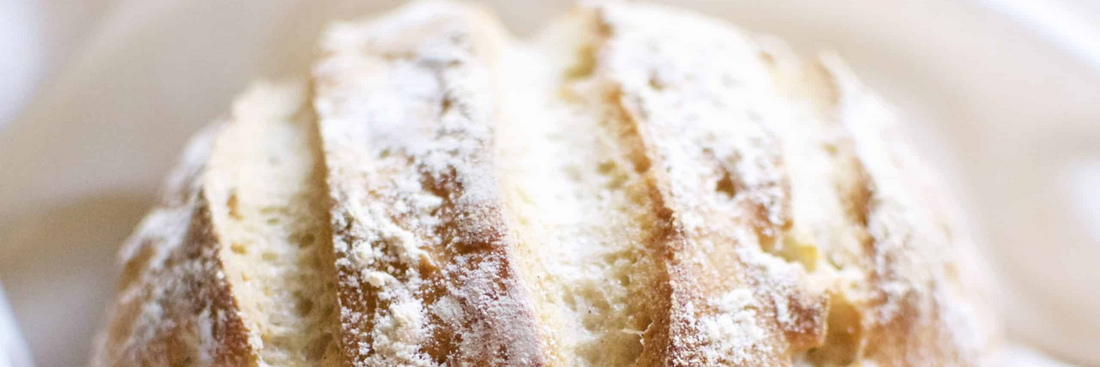Storing gluten-free bread properly is essential to maintaining its freshness, texture, and taste. Unlike traditional bread made with wheat flour, gluten-free bread has different storage needs due to the absence of gluten, a protein that helps retain moisture and elasticity. Gluten-free bread can dry out more quickly, become crumbly, or even mold faster if not stored correctly. In this guide, we’ll explore the best methods for storing gluten-free bread in various types of bread bags and offer tips for keeping your bread fresh for longer.
Why Does Gluten-Free Bread Need Special Storage?
Gluten-free bread is typically more sensitive to changes in moisture and air exposure. The lack of gluten affects its structure, causing it to lose freshness faster than traditional bread. This is why gluten-free loaves tend to have a shorter shelf life and are more prone to going stale or molding. Proper storage in the right type of bread bag can help prevent these issues and ensure your gluten-free bread stays fresh for as long as possible.
Unique Storage Challenges for Gluten-Free Bread:
- Moisture retention: Gluten-free bread often lacks the elasticity to retain moisture, causing it to dry out more quickly.
- Crumbling: Because of its more fragile structure, gluten-free bread can become crumbly if exposed to air for too long.
- Mold growth: Gluten-free breads, especially those made with natural ingredients and fewer preservatives, may be more susceptible to mold if stored in overly warm or moist conditions.
Best Bread Bags for Storing Gluten-Free Bread
Choosing the right type of bread bag is crucial to controlling moisture levels and preserving the bread's texture. Each type of bread bag offers different benefits and drawbacks, so understanding how they interact with gluten-free bread can help you make the best choice for your needs.
Plastic Bread Bags
Plastic bags are one of the most common options for storing gluten-free bread. They are great at retaining moisture, which is essential for keeping the bread soft. However, if too much moisture is trapped inside the bag, it can cause the bread to mold faster.
- Best For: Short-term storage (1-2 days), when you want to keep the bread soft and prevent drying.
- How It Works: Plastic bags prevent moisture from escaping, keeping the bread from drying out. However, condensation inside the bag can create the perfect environment for mold.
- Tip: If you choose to store gluten-free bread in a plastic bag, make sure the bread is completely cooled to room temperature before sealing it to avoid trapping excess moisture. Refrigerate or freeze the bread if you don’t plan to consume it within a day or two.

Cloth Bread Bags
Cloth bread bags, typically made from materials like cotton or linen, allow for some airflow, preventing moisture from building up inside the bag. This makes them a great option for gluten-free bread if you’re concerned about mold, but they may cause the bread to dry out faster than plastic bags.
- Best For: Loaves you want to keep crusty, such as artisan gluten-free bread, or for storing bread in cool, dry environments.
- How It Works: Cloth bags allow air circulation, preventing excess moisture buildup that can lead to mold. However, this also means that the bread may lose its softness and become dry more quickly.
- Tip: To prevent gluten-free bread from drying out in a cloth bag, consider wrapping the bread loosely in wax paper before placing it in the cloth bag. This adds an extra layer of moisture control.
Paper Bread Bags vs. Cotton Bread Bags: Which Should You Choose for Better Uses?

Paper Bread Bags
Paper bread bags, often used by bakeries, offer a balance between moisture retention and breathability. They allow some air to circulate while also protecting the bread from too much drying out. However, they aren’t ideal for long-term storage.
- Best For: Storing gluten-free bread for short periods (1-2 days) while maintaining a balance between softness and preventing mold.
- How It Works: Paper bags allow enough airflow to prevent mold while keeping the bread from drying out too quickly. However, after a day or two, the bread may start to lose its texture.
- Tip: To extend the freshness of gluten-free bread in a paper bag, try placing the bag in a bread box, which will help regulate airflow and moisture.

Freezer-Safe Bags
For long-term storage, freezing gluten-free bread is the best option, and freezer-safe plastic bags work perfectly for this. Gluten-free bread can be frozen without losing too much quality, and freezing significantly extends its shelf life.
- Best For: Long-term storage (weeks or months) when you want to preserve the bread’s texture and flavor without worrying about mold or staleness.
- How It Works: Freezer-safe bags protect the bread from freezer burn and help retain moisture during freezing and thawing.
- Tip: Slice the bread before freezing so you can easily thaw individual slices as needed. Wrap the bread in a layer of wax paper or aluminum foil before placing it in the freezer bag for extra protection.
Best Practices for Storing Gluten-Free Bread
Now that we’ve covered the best types of bread bags, let’s look at some general tips for ensuring your gluten-free bread stays fresh, whether you're storing it for short or long-term use.
Let the Bread Cool Completely Before Storing
Warm bread releases steam, which can create condensation in the bag, leading to mold. Always let gluten-free bread cool completely to room temperature before storing it in any type of bag.
Store Bread in a Cool, Dry Place
Gluten-free bread should be stored in a cool, dry area to prevent mold growth. Humid or warm environments can cause the bread to spoil faster. If your kitchen is particularly warm or humid, consider refrigerating the bread to extend its freshness.
Use the Freezer for Long-Term Storage
Freezing gluten-free bread is the best way to preserve it for longer than a few days. Make sure to wrap it securely and store it in freezer-safe bags. Gluten-free bread can be stored in the freezer for up to 3 months.
Refrigeration for Short-Term Freshness
If you plan to eat the bread within a week, refrigerating it is a good option. While refrigeration can sometimes make traditional bread go stale faster, gluten-free bread tends to hold up better in the fridge. Just make sure to store it in an airtight plastic bag to prevent drying.
How to Thaw Frozen Gluten-Free Bread
When thawing gluten-free bread, it's important to preserve its texture. Here are a few tips:
- Thaw at room temperature: Remove the bread from the freezer bag and let it thaw at room temperature. This typically takes about 1-2 hours, depending on the loaf size.
- Toast or warm: Gluten-free bread often benefits from being toasted or lightly warmed after freezing. This can help restore its softness and improve the texture.

Conclusion
Storing gluten-free bread properly can make all the difference in maintaining its freshness and preventing mold or staleness. Choosing the right bread bag, such as plastic for moisture retention, cloth for airflow, or freezer-safe bags for long-term storage.









